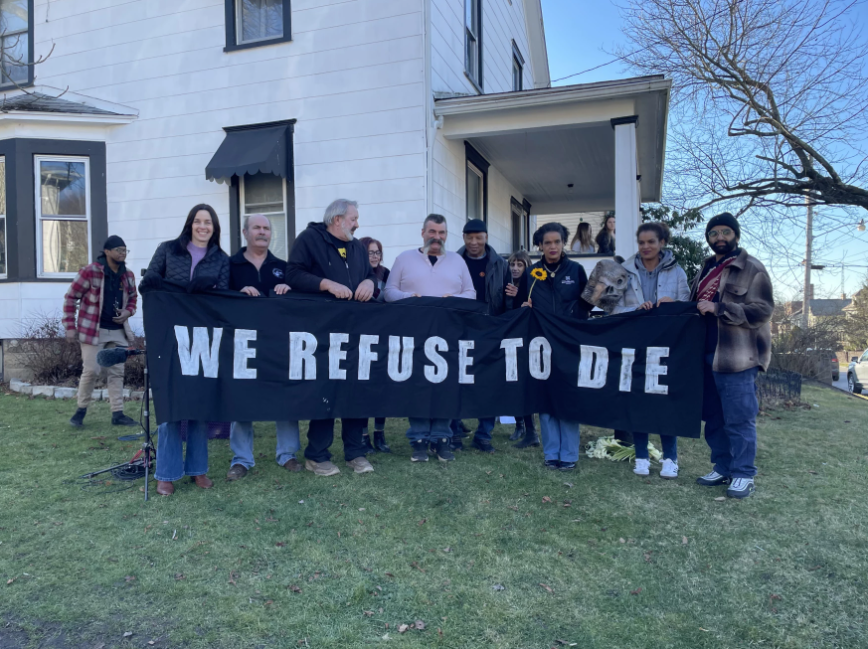
By Leila Waid.
Recently, Toxic Free Future (TFF) released a research report on how much vinyl chloride is transported through the U.S. daily. Vinyl chloride is a carcinogenic chemical used to make PVC plastic products. Over the past year, vinyl chloride has constantly been mentioned in the news, partly due to the train derailment in East Palestine, Ohio, last February. The toxic burn of vinyl chloride and other hazardous material resulted in the immediate evacuation of residents within a one-mile radius and has plagued the community with fears and uncertainties about their health since then.
Notedly, the Norfolk Southern train derailment was not the only time a vinyl chloride contamination occurred due to a train accident. In 2012, Paulsboro, New Jersey, experienced a similar disaster. In that community, residents also faced exposure to vinyl chloride after a train accident occurred.
TFF set out to quantify how many people live in the vicinity of the trains that carry this toxic material every day. How many people live their day-to-day lives not realizing that the disasters that hit East Palestine and Paulsboro are not some far-away tragedy that couldn’t possibly happen to them but are instead closer to home than they could have ever imagined? TFF’s report highlights the shocking reality that many live near these train tracks where this toxic material is constantly being transported. The study analyzed the train route of OxyVinyls – a company that was involved in both of the train derailments discussed above – because they have the furthest distance between the procurement site, in Texas, and the PVC manufacturing plant, in New Jersey.
Shockingly, TFF’s report found that over three million individuals, of which 670,000 are children, live within a one-mile radius of the train routes carrying this extremely toxic chemical. Over one year, 1.5 billion pounds of the toxic chemical are carried across train tracks. And 36 million pounds of the chemical is being transported at any given point across the entirety of the U.S.
Of course, someone might think to argue, “I don’t live near the train tracks, so this doesn’t affect me.” However, even individuals not directly in the vicinity of the train tracks still experience adverse effects from the production and use of vinyl chloride. The first reason this affects everyone is that vinyl chloride production releases air pollution, which can travel great distances and cause various health issues. The second reason this issue should concern everyone is that vinyl chloride and PVC production releases over three metric tons of greenhouse gas, further exacerbating the climate crisis. Even the extraction process necessary for vinyl chloride is harmful to the environment. Hydrofracking has a variety of environmental contamination concerns and also releases methane – a potent greenhouse gas. Even abandoned fracking wells have been found to emit methane.
So, how do we address this issue? First, advocate your policymakers for stronger railroad regulations so that other accidents like those in East Palestine or Paulsboro do not occur. Second, pressure government action and stronger EPA regulation around vinyl chloride production. And third, vote with your wallet. Do not purchase materials made out of PVC plastic and pressure retail stores, such as the Home Depot, to phase out selling PVC products.



 Cunningham got his start in environmental activism at a young age from a fight to defend his family’s land in Missouri from the expansion of the I-95 interstate. From that battle forward, Randy never looked back and dedicated his life to speaking out against environmental and human rights injustices. He has spent the majority of his life involved in a wide variety of campaigns, including landfill and incinerator use, the ban of plastic bags, and available housing. As a part of his lifelong achievements, Randy points to the publishing of his book,
Cunningham got his start in environmental activism at a young age from a fight to defend his family’s land in Missouri from the expansion of the I-95 interstate. From that battle forward, Randy never looked back and dedicated his life to speaking out against environmental and human rights injustices. He has spent the majority of his life involved in a wide variety of campaigns, including landfill and incinerator use, the ban of plastic bags, and available housing. As a part of his lifelong achievements, Randy points to the publishing of his book, 

